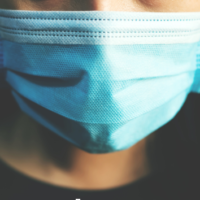
Rattankun Thongbun/iStockBy DR. ALEXIS E. CARRINGTON, ABC News
(NEW YORK) — The Centers for Disease Control and Prevention recently came out with a new report highlighting the importance of mask fit, suggesting that a close-fitting mask or even doubling up on masks might offer more protection.
But a mask only works if you wear it consistently and avoid taking it off.
With new information developing about mask-wearing and more contagious COVID-19 variants reinforcing the need to wear masks more often, public health experts such as Dr. Anthony Fauci are stressing the importance of finding a mask that’s both effective and comfortable to wear.
As the nation’s front-line workers can attest, wearing masks for longer periods of time might become uncomfortable. Thankfully, there are ways to fix that.
Here are some top tips from doctors to help you wear your mask comfortably, and even keep it on all day if you need to:
Ear savers
Ear savers have become a popular knick-knack to help ease the strain mask strings can create on the ears. Instead of the string being hooked to the back of the ears, the ear savers hold the strings in place on the back of your head.
“I love ear savers because that pain is very annoying after a long day,” says Dr. Darien Sutton, an ABC News medical contributor and an emergency physician who has been on the front lines since the pandemic began.
Different kinds of ear savers can be purchased or simply created as a DIY project. Headbands with buttons sewn on can also get the job done. To keep things simpler, a barrette or paper clip to connect the loops on the back of the head can also work.
Pressure bandages
We’ve seen the images of front-line workers with masks leaving behind indentations on the face after a long shift. Thankfully, there are some creative ways to achieve a balance of staying comfortable while having the long-term protection from the mask.
“For me, I swear by pressure Band-Aids, which are silicone foam dressings,” says Sutton. “I cut them and place them over my nasal bridge and cheeks.”
Dr. Misty Eleryan, a board-certified dermatologist and current micrographic surgery and dermatologic oncology fellow at University of California, Los Angeles, finds it helps around her ears.
“I just cut out foam to fit on in the crease of my ear and then I wear my mask,” says Eleryan.
Although pressure bandages are more commonly used for tighter-fitting masks such as N95s, they can be used with surgical masks if they are uncomfortable to wear for long hours.
Defogging
If you wear glasses, it is almost inevitable to have fogging when the mask is worn for a long time. Thankfully, there are some affordable ways to reduce it. One quick trick is to place a facial tissue inside the mask, which absorbs some of the moisture from your warm breath and reduces the fog. There is another option of buying over-the-counter anti-fog sprays that can be applied to the lens of your glasses.
Make sure your adjustments aren’t allowing invisible droplets in or out. Consider a mask with adjustable metal on the nose. If you have a proper fit — the amount of fogging up of your lenses should be minimal.
Test your fit
When health care providers are given N95 masks, they undergo a formal fitting process. Though N95s are still reserved for health care workers, you can take a page from their book by finding a mask that fits your face properly. Masks come in different sizes and having the one that fits your face snugly ensures your safety and overall comfort.
When buying a mask, ensure it’s the right size for your face — without gaps in the line of defense. The CDC recommends wearing a mask that covers your nose and mouth, secures under your chin and fits snugly against the sides of your face.
Overall, the mask should be small enough that you don’t see large gaps on the sides, near your cheeks, and around your nose and chin, but also large enough that you can carry on a conversation without it slipping off your nose.
Copyright © 2021, ABC Audio. All rights reserved.















